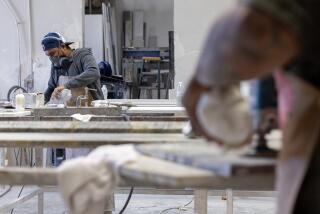IN EXCESS
- Share via
Ashes to ashes, silicone to goo--only your mortician knows for sure. The fashionable silicone breast implants and augmentations that are sweeping Southern California women into plastic surgeons’ offices faster than their sexist male counterparts can say “I like big boobs,” are leaving local crematory operators with a messy clean-up job. “It doesn’t burn. The silicone turns into a sticky goo or gel-like mass on the floor of the crematory and must then be somehow cleansed and removed,” says John Gill, director of the California State Cemetery Board.
Although most local crematory operators say the problem is currently manageable, many fear that as the cosmetically revised population grows, increasing incidents of silicone meltdown could damage the machines used in cremation. “There is talk of lobbying for legislation requiring that all silicone implants be removed prior to the cremation process,” says Rhonda Ford, director of cremation for Pierce Brothers Mortuaries in Los Angeles. “The problem is nobody knows the deceased has them,” says Gill, who’s trying to figure out a way to distinguish implants from the real thing. “We may have to go to contract disclosure statements. The next of kin would be responsible for any damages to the machines.”
Dr. Ian Brown, a prominent Beverly Hills plastic surgeon, agrees with Gill that most plastic surgery patients aren’t as forthright as, say, Joan Rivers. “The morticians should carefully examine the corpse. Usually there’s some kind of small incision that gives it away. Or a mammogram could be done on the cadaver.” Brown thinks morticians should leave the removal to a qualified plastic surgeon. “Morticians would have to go through extensive training in order to be able to remove implants.” There are 180,000 breast-augmentation surgeries performed in the United States each year; Southern California leads the nation in both augmentations (about 12,000 a year) and cremations (about 82,000 annually). Until the messy problem is resolved, Brown and others suggest that plastic surgery patients who plan to be cremated carry some kind of identification card.






